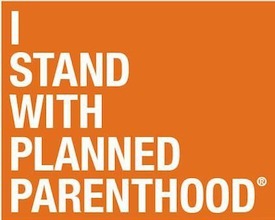The Republican jihad against Planned Parenthood continues to have real consequences.
In 2011, under pressure from Republican leaders, state health officials began enforcing a provision lawmakers wrote to exclude Planned Parenthood and any clinics with organizational ties to abortion providers from the Women’s Health Program. At the time, Planned Parenthood clinics provided 40 percent of the program’s services and often subsidized services not expressly covered by it.
To replace Planned Parenthood, the state recruited new providers, the majority of which are physician groups, to participate in the reimagined program. But unlike many reproductive health clinics, which qualify for additional federal family planning grants, physician groups generally don’t have the public financing to pay for services that aren’t covered by the state program. While physician groups can absorb some of these additional costs, in most cases a patient must pay out of pocket for additional services or find an alternative provider that receives federal subsidies, which can delay care.
Emma Moreno, assistant manager at Valley Women’s Specialists, a physician group in Weslaco that participates in the Women’s Health Program, said the program covers Pap smears, for example, but if a patient tests positive for the human papillomavirus and needs further treatment, that care isn’t covered.
“If you’re going to provide a program or a service, provide the full service and not just half of it,” said Moreno, whose physician group still encourages women who may be eligible to apply for the state program.
[…]
To be eligible for the Women’s Health Program, a woman must have an income at or below 185 percent of the federal poverty threshold, or less than $1,800 a month for an individual. The original Women’s Health Program, which was jointly funded by the state and the federal government, was an offshoot of Medicaid. The federal government discontinued its $9-to-$1 match for the program in January 2012. That followed the state’s exclusion of Planned Parenthood clinics, despite the fact that those clinics were already prohibited from performing abortions because they accepted taxpayer dollars.
The Texas Women’s Health Program is nearly identical to the former Medicaid program in scope, though it now covers STD testing and some routine treatment, and is run entirely with state funding — $35.6 million a year.
In the first six months of the state-run program, enrollment and claims for services dropped significantly.
“While these numbers were collected before we added increased funding [for] women’s health in the last legislative session, they are exactly the type of data we will be carefully reviewing in the months ahead,” state Sen. Jane Nelson, R-Flower Mound, the chairwoman of the Senate Health and Human Services Committee, said in an email to The Texas Tribune last month. “It is important that we make sure the dollars we invested are providing meaningful preventive health services for the women of Texas.”
When I talk about how the likes of Rick Perry, David Dewhurst, and Greg Abbott just don’t want people to have access to health care, it’s about more than just their mulish resistance to expanding Medicaid or their petty harassment of ACA navigators. Their actions have had real world consequences. I’ve talked about this at length – browse through my Planned Parenthood archives, there’s too many entries to link to individually – and the bottom line remains that the state of Texas took something that was working and broke it for ideological reasons. They can try to put it back together again, at greater cost to Texas taxpayers, but even if they succeed they will still have disrupted the delivery of health care to hundreds of thousands of women, forcing many of them to find new doctors, for no good reason.

